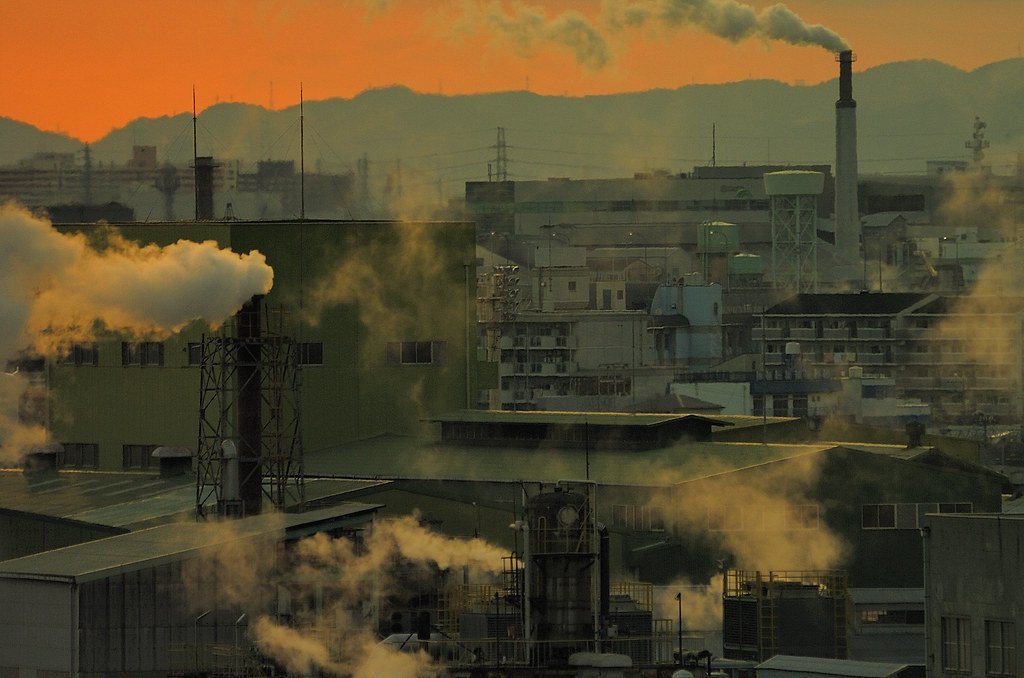Economic Development and Environmental Protection Are Not Necessarily in Conflict With Each Other
Traditionally, it has been assumed that if environmental regulations become more stringent, companies will have to reduce emissions, cut production, or switch to cleaner production methods to comply. These practices increase costs and reduce profits, leading many economists to argue that more stringent environmental requirements will hinder economic growth. Policymakers and the public often see environmental protection and economic development as a trade-off; if less pollution is desired, then some economic growth must be sacrificed. On the other hand, some believe it is justifiable to allow some contamination in exchange for a higher growth rate. This trade-off is particularly pronounced in many developing countries, where poor environmental quality and low income are inescapable.
Thirty years ago, economist Michael Porter challenged this assumption about the relationship between environmental protection and economic growth. He suggests that, if properly designed, stricter environmental regulations may give firms a greater incentive to innovate. The purpose of such innovation may be to reduce the cost of compliance for manufacturers. If the level of innovation is powerful enough to lower production costs, it could increase the economy’s efficiency.
In developing countries, however, Porter’s hypothesis is more difficult to establish. One condition needed for Porter’s hypothesis to hold is that firms have an incentive to innovate technologically, which requires a low cost of innovation for the firm, or that the benefits of innovation are large enough to warrant it. But, some developing counties simply do not have the soil for innovation. Inadequate intellectual property rights give firms less incentive to make long-run investments as they are unsure whether they will retain any benefits. One possible solution to this problem is simple: firms in developing countries can use technologies from more developed countries. In the West, many firms invest in new environmental technologies that are often invented but not commercialized. Slow growth rates and legacy assets may also make manufacturers in richer countries reluctant to switch to new technologies.
Studies of international trade have also considered how environmental policies in developing countries may affect economic growth in an increasingly globalized world. It is well known that developed countries, with their higher incomes, have a higher demand for a cleaner environment, thus stricter environmental regulations. Due to this, companies from the developed world are likely to invest and outsource production to developing countries with lax environmental regulations, in search of profits. This hypothesis is called the Pollution Haven Hypothesis. Pollution havens are countries that impose comparatively loose environmental regulations. In a sense, the absence of strict regulation attracts investments and promotes economic growth. It boosts GDP growth in the short run, though it is unclear whether this approach is sustainable.
However, lax environmental policies in developing countries are often attacked with the argument that without strict regulations, firms in the West will take advantage of these lax policies in countries whose people are already comparatively less well off, leaving them with both poverty and pollution to deal with. But, let us not forget that there are developing countries where people can barely afford basic necessities; for some, the immediate need to get food on the table outweighs all the possible benefits an individual could get from efforts to reduce pollution. If pollution is the price for a better life, perhaps pollution is acceptable. Environmental protection is about surviving to the next century; if one struggles to get food on the table for next week, it is unlikely he will prioritize the environment.
Yet there is another possibility where being a pollution haven does not worsen the environment: lax environmental policies led manufacturers from rich countries to move their factories to the pollution haven, and consequently, the production in rich countries, as a whole, has become cleaner. The developing country’s production has also likely become cleaner, as new factories can produce at a lower average level of pollution, thus shifting its whole economy to cleaner production. In this case, pollution havens have reduced environmental pollution in both countries while promoting economic growth.
As we can see, there are possibilities to control pollution while promoting economic growth. Admittedly, the conditions are somewhat challenging to meet. But, we need not be pessimistic. Boosting the economy and protecting the environment ultimately share the same goal: to improve the human condition. It would be most desirable if Porter’s Hypothesis or the Pollution Haven Hypothesis could be realized. Otherwise, a developing country may opt for stricter regulations, or prioritize growth rate over the environment. In either case, it deserves to be respected for its choices, as the individual circumstances are more complex than we can wholly understand.
Edited by Nadira Anzum
Featured Image "Town of pollution" by sgym@BMX is marked with CC BY-NC-ND 2.0.

